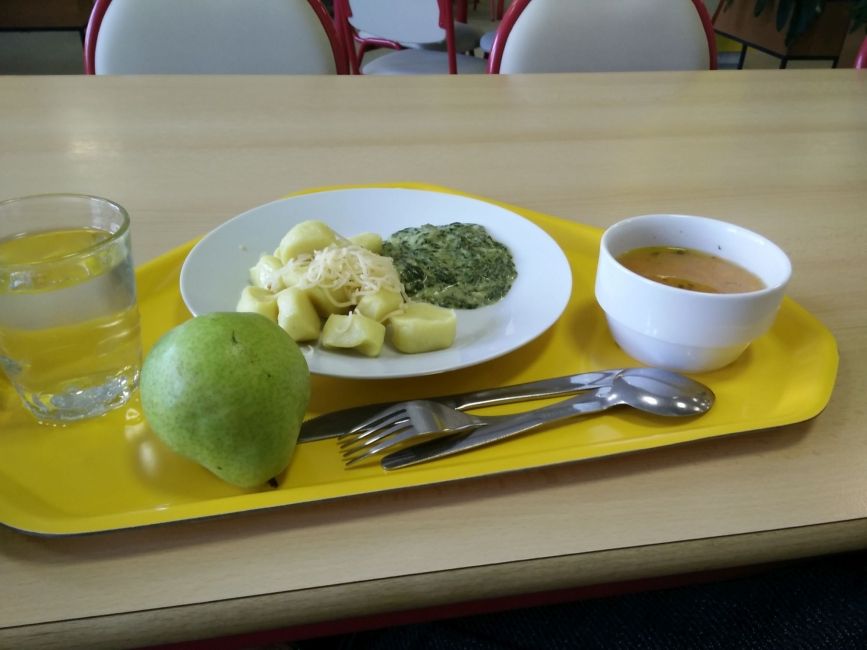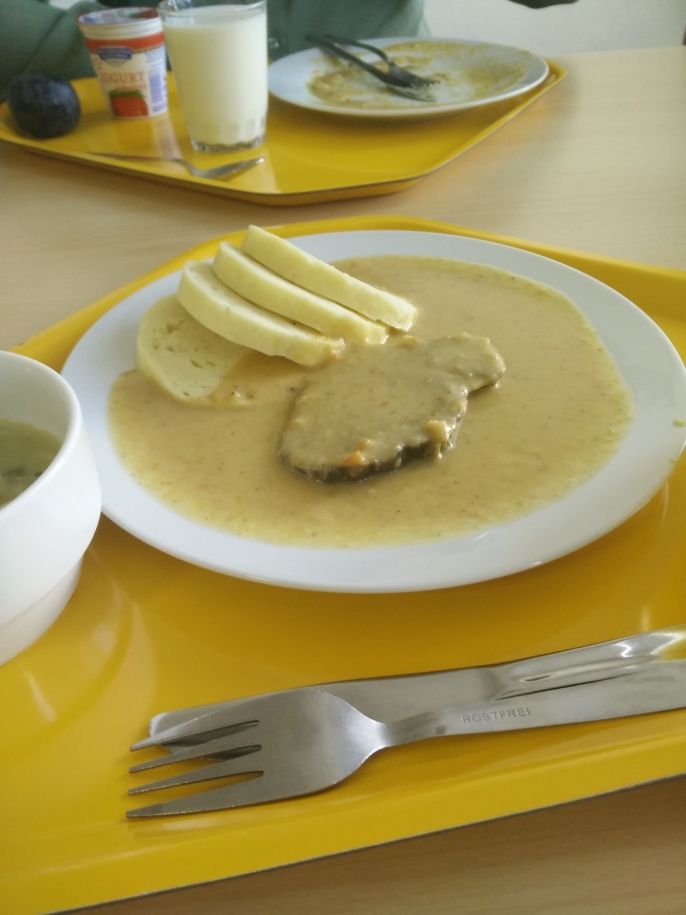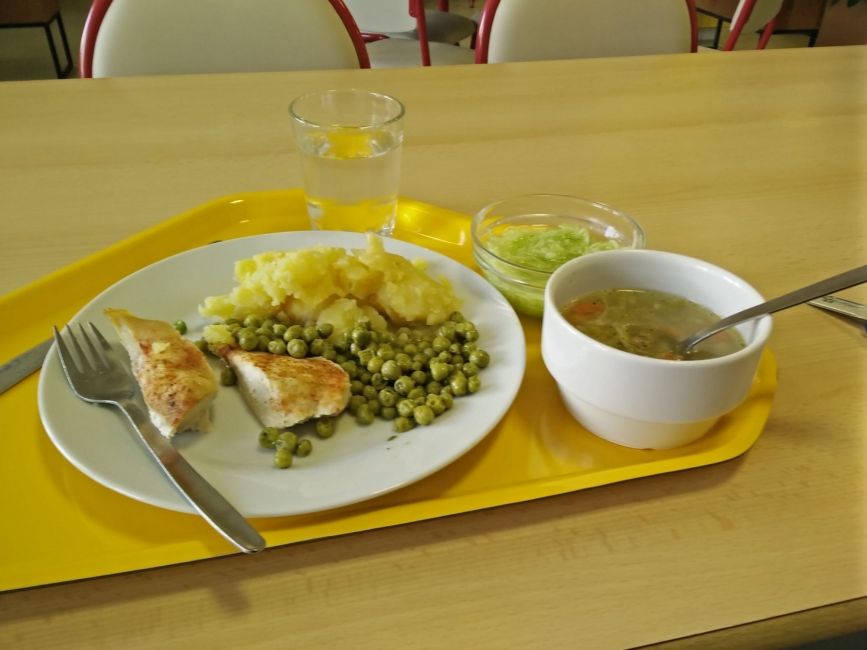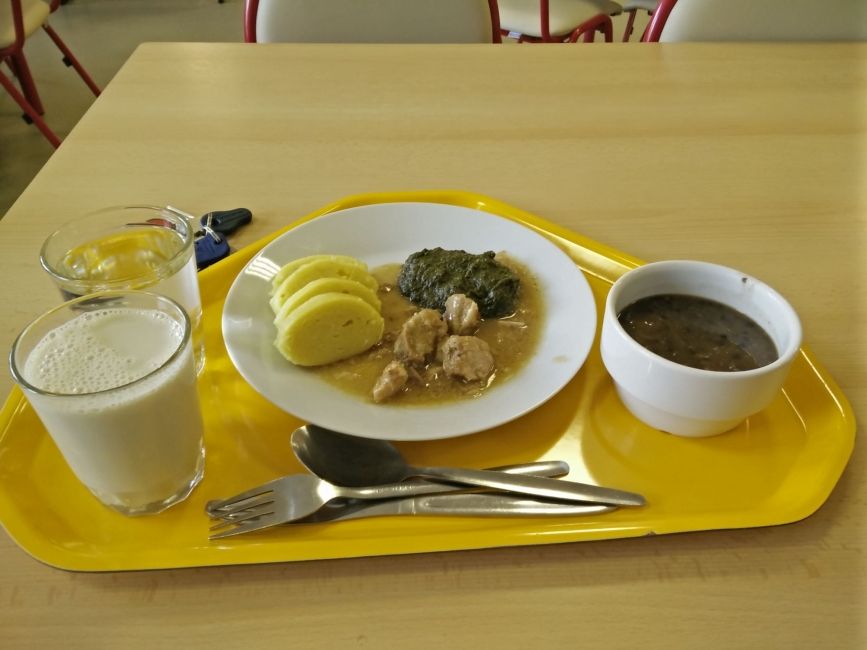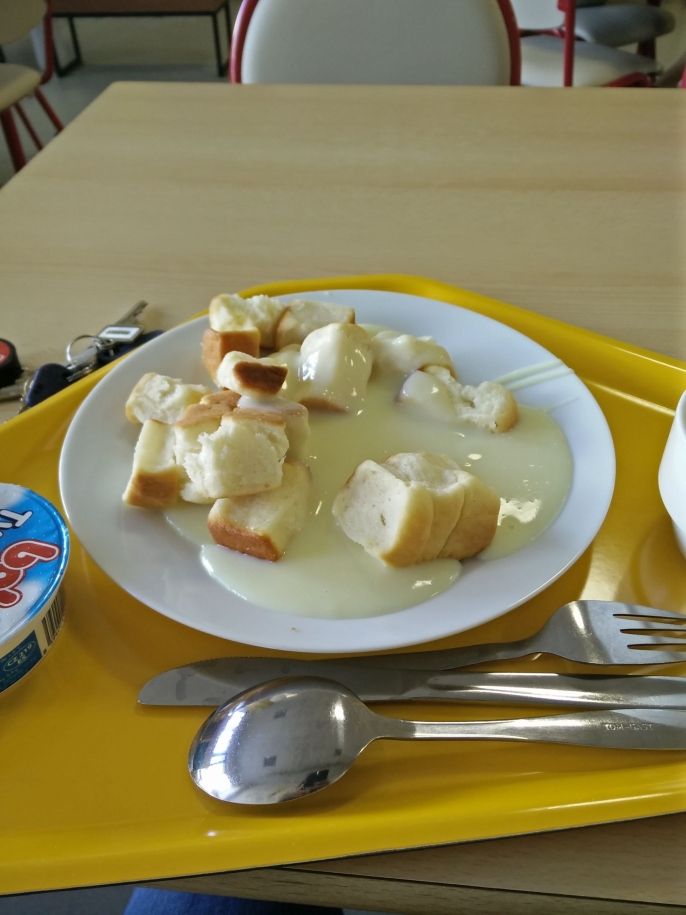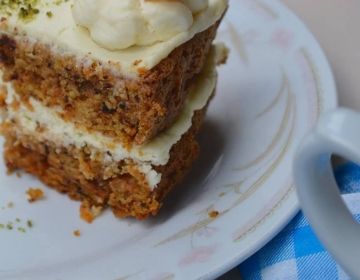One Week in a Czech School Cafeteria
As I sit down to write this, I can’t help but feel that I’ve done a bit of expository journalism. My fellow teachers may see me as the new foreign teacher, blending in quite poorly during lunchtime, but really I’ve been meticulously recording the intricacies of the cafeteria. I’m not one for taking photos of food. Indeed, I’m waiting for that trend to die. However, I couldn’t exactly write about Czech gastronomy without photographic evidence. And so each day this week I subtly pretended to give my phone a quick check before settling in to eat, and instead, snapped photos of the delicious, mysterious, and often questionable plates in front of me.
My fascination with the school lunch routine here was immediate. First and foremost, because it involves eating a real meal, including a daily soup, main dish, and some type of fruit or yogurt option. This is unthinkable in the USA, where many states have legally declared french fries a vegetable. My memories of cafeteria options from middle school include greasy pizza and packets of cookies. It was borderline at best to eat that as an 8th grader, so the idea of a teacher (aka an adult) eating in the cafeteria was actually quite foreign to me. But it’s absolutely ubiquitous here. And it’s wildly cheap. Teachers pay 500 crowns a month (about $22) for daily lunch, and they really get their money’s worth. And not just because the portions are generous, but because many bring huge takeaway containers that the lunch ladies graciously fill to the brim.
Teachers and students all receive a fob-like device. There’s a machine outside the lunch room that vaguely resembles an ATM. The fob is used to select one of two main dish options for each day of the week. I didn’t quite understand this routine during the first few days of work, but I learned my lesson quickly. On my fourth day of work, I was served something I can genuinely deem “mystery meat.” It came atop a pile of rice and covered in a watery gravy with what looked like cubes of spam floating in it. I took approximately three bites before politely excusing myself. The next day I found myself vomiting behind a tree in a local park. Since then I’ve been as discerning as possible in choosing my options. Luckily my combined 14 months of Czech classes allow me to read the menus with relative ease.
Of course, there are dishes that have names you won’t find in a textbook, and many words that result in something slightly different on the plate. Unless I’m completely mistaken, the word for contact lenses also refers to a plate of lentils. I’ve learned that “okurka” (cucumber) is always a pickle. This is confusing to me, not because I missed the health class about where pickles come from, but because there is most definitely a word in Czech for pickle. “Vidensky parek” (Viennese sausage) was a pale rubbery entity that roughly resembled a hot dog. “Kysely-sladky kure” (sweet and sour chicken) was neither sweet nor sour, to my great chagrin. So I’m slowly learning to read between the lines of the school lunch menu. There have been other dishes, however, that were delicious and delightful. Most notably, chicken schnitzel with buttered potatoes and cabbage. Last week I had a big plate of eggs scrambled with tomatoes and onions, served with rye bread. Five stars. Another time I had my taste buds totally rocked by pea patties with tartar sauce. At the end of the day, optimism prevails.
Related Posts
What it’s like to Teach Abroad in the Czech Republic
Alumni Spotlight: Elisabeth B. After spending a year exploring historic streets and immersing herself in a new culture, Portland, Maine native Elisabeth Brewington returned home from teaching English in the... keep reading
Teach English in the Czech Republic
The Destination Placed right in the heart of Europe, Czech Republic is a unique destination known for its food and drink, bohemian lifestyle, and medieval architecture. It’s a great place... keep reading
Receiving my Acceptance Letter & The Process Leading up to Departure!
It has now been a year since I turned in my application to teach in the Czech Republic, but it seems like just yesterday. I remember frantically checking my email... keep reading
